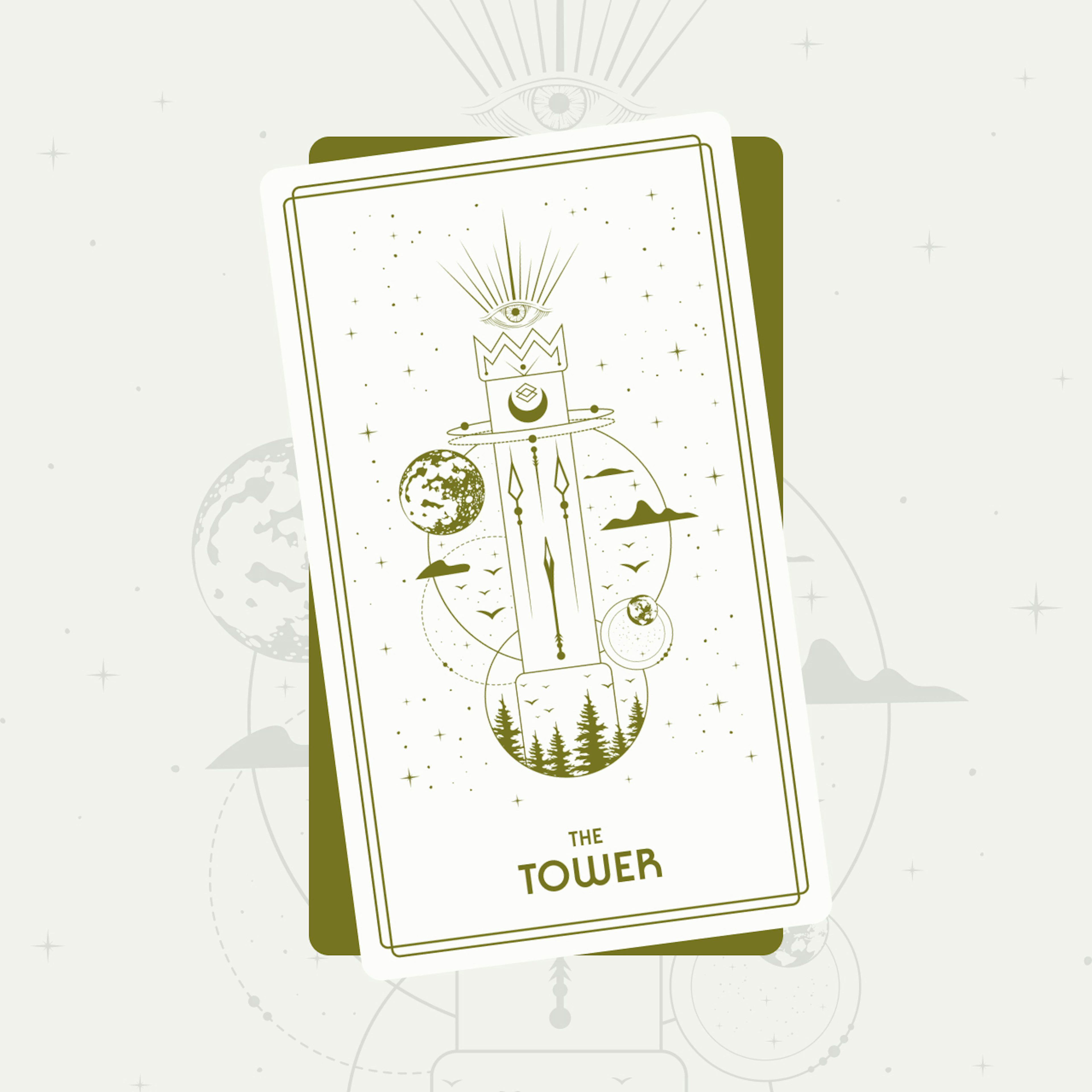Major Arcana Tarot Card Meanings and Keywords (All 22)

The 22 tarot cards of the Major Arcana depict fundamental themes or shared archetypal human experiences and impart wisdom around the major lessons of life. Whereas the Minor Arcana cards reflect the themes and concerns of everyday experience and describe our behavior, emotions, thoughts, and the ways we relate to the material world, the Major Arcana cards mean something broader. In general, the Major Arcana reflects spiritual lessons to be integrated.
The Major Arcana can be broken up into three distinct lines representing three phases of soul development, a concept formulated by tarot scholar Rachel Pollack.
The First Line, which includes Major Arcana cards 1-7 (The Magician through The Chariot), can be seen as representing the process of ego development and the desire to concretize the Self through external achievements, relationships, and participation in society.
The Second Line, which includes Major Arcana cards 8-14 (Strength through Temperance), represents an examination of one’s subconscious material through inner work, self-reflection, and a reckoning with universal forces outside of the individual’s control.
The Third Line, which includes Major Arcana cards 15-21 (The Devil through The World), represents the development of a superconscious or transpersonal awareness and the dissolution of the ego through experiences where a deeper essential self can be realized, contacted, and integrated.
The Fool, Major Arcana card #0, stands apart from the Three Lines and can be thought of as the protagonist in “The Fool’s Journey,” the figure who encounters and assimilates each archetype along the journey of the Major Arcana.
List of the Major Arcana Tarot Cards
Number | Name | Keywords (Upright, Reversed) |
|---|---|---|
0 | Freedom, Self-Doubt | |
1 | Empowerment, Creative Blocks | |
2 | Intuition, Isolation | |
3 | Generativity, Stagnation | |
4 | Authority, Rigidity | |
5 | Tradition, Dogma | |
6 | Harmony, Conflict | |
7 | Courage, Roadblocks | |
8 | Compassion, Passivity | |
9 | Inner Wisdom, Distraction | |
10 | Cycles, Inertia | |
11 | Consequences, Distortion | |
12 | Surrender, Discomfort | |
13 | Transformation, Clinging | |
14 | Integration, Volatility | |
15 | Confronting Fears, Denial | |
16 | Upheaval, Resistance | |
17 | Renewal, Disconnection | |
18 | Mystery, Illusion | |
19 | Radiance, Hubris | |
20 | Rebirth, Stuck | |
21 | Culmination, Liminality |
The Fool’s Journey
The Major Arcana illustrates what is commonly referred to as “The Fool’s Journey,” as The Fool (#0) is the first card of the Major Arcana. The Fool’s Journey is not a linear ascent to greatness but rather a spiraling path to wholeness that involves the reconciliation of many dualities and the integration of the conscious and the unconscious aspects of the psyche.
Because all 78 cards can be seen as aspects that exist within each of us, the tarot can help us to individuate by revealing the parts of ourselves which may exist on an unconscious level. This process leads one away from identifying exclusively with one’s ego (desires, drives, and identity markers) and towards a realization of a deeper essential self.
Archetypes: What are They?
The tarot is archetypal in nature, meaning that the cards are not merely images of individual figures or scenes but are illustrations of universal patterns, images, symbols, and themes that exist within the collective unconscious. Carl Jung conceived of the collective unconscious as a kind of shared repository of psychic artifacts which have evolved throughout the course of human evolution.
Archetypes are universal patterns, symbols, and motifs that exist within the collective unconscious.
Archetypes are a reflection and an expression of both our interior worlds as well as the world at large, which is why the tarot deck can effectively reflect both. When we become conscious of the archetypes present in our lives, we can deepen our self-awareness and work to integrate them consciously. The tarot helps us to do that by mirroring what is present for us at any given moment in time.
Major Arcana Tarot Card Meanings
In a tarot deck, such as the Rider Waite Smith version, each Major Arcana card’s meaning constellates around a central theme, but its specific meaning and interpretation can change depending on its position within a spread, the question posed, and whether it faces upright or reversed. While each card of a tarot spread innately carries a range of both negative and positive meanings, some tarot readings interpret reversed cards as indicating a kind of blockage or inversion of the card’s upright meaning.






















